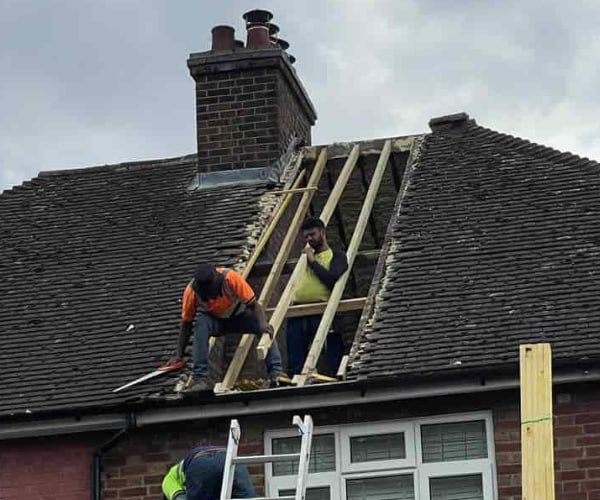The Role of Underlayment in Slate Roof Repairs
Introduction: Slate roofs are known for their durability and timeless beauty, often lasting over a century when properly maintained. However, even the most robust slate roofs may require repairs over time due to wear, weathering, or damage. When it comes to slate roof repairs, underlayment is one crucial element that often goes unnoticed. In this blog post, brought to you by TVB Roofing Wellingborough, we will delve into the role of underlayment in slate roof repairs and why it is essential in maintaining the integrity of your slate roofing system.
What Is Underlayment?
Underlayment, or roofing felt or membrane, is a protective layer installed beneath the outer slate or tile roofing material. It is an additional barrier against water infiltration, moisture, and other potential threats that can compromise the roof’s structure and performance.
The Role of Underlayment in Slate Roof Repairs
- Waterproofing
The primary role of underlayment in slate roof repairs is waterproofing. Slate, while naturally water-resistant, is not entirely impervious to moisture. Underlayment acts as a secondary defence against water infiltration. It prevents rainwater or melting snow from seeping through gaps or imperfections in the slate tiles and the roof’s structure. This is particularly crucial during the repair process when damaged or missing slate tiles may expose vulnerable areas of the roof.
- Protecting the Roof Deck
Underlayment safeguards the roof deck or substrate from moisture damage. If water were to penetrate the slate roofing material, it could lead to rot, decay, or the growth of mould and mildew within the roof structure. Underlayment helps maintain its integrity and prolongs its lifespan by preventing moisture from reaching the roof deck.
- Temporary Protection
During slate roof repairs, underlayment serves as a temporary protective barrier. Suppose sections of the slate roof need to be removed for repair or replacement. In that case, the underlayment provides immediate coverage, ensuring the roof remains waterproof until the repair is completed.
- Improved Efficiency
Underlayment can enhance the overall efficiency of the slate roofing system. It provides an additional layer of insulation, which can help regulate indoor temperature and reduce energy costs. Additionally, it helps create a smooth and even surface for installing new slate tiles, improving the roof’s aesthetics and performance.
Choosing the Right Underlayment
Selecting the appropriate underlayment is crucial for the success of slate roof repairs. Here are some considerations:
- Material: Roofing underlayment materials vary, including asphalt-saturated felt, synthetic materials, and rubberised membranes. The choice depends on climate, budget, and personal preferences.
- Thickness: Thicker underlayment typically offers better protection and durability. Consult with a roofing professional to determine the ideal thickness for your slate roof.
- Breathability: Some underlayment materials are designed to be breathable, allowing moisture to escape from the roof structure while still providing waterproofing. This can help prevent trapped moisture that can lead to damage.
Conclusion: In slate roof repairs, the role of underlayment cannot be overstated. It acts as a critical layer of protection, safeguarding your roof deck and home from moisture damage and ensuring the longevity and performance of your slate roofing system.
Call us on: 01933 823 227
Click here to find out more about TVB Roofing Wellingborough
Click here to complete our contact form and see how we can help with your roofing needs.

